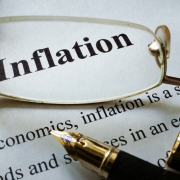Treasurys Get Harder To Sell And That’s Not Good For CRE
In the latter half of last week, yields on Treasury 10-years jumped, hitting 4.55% on Wednesday, moving to 4.56% on Thursday, and dropping down to 4.50% on Friday. By the end of Monday, it was 4.63%
If you ignore 2023 when rising interest rates had a heavy impact on Treasury yields, the last time the 10-year was in this range was in the fall of 2007, as the initial rumblings of what would become the Global Financial Crisis.
Markets are not seeing the trembling of an out-of-control housing market and the derivatives built on top of it. But the current shakings might be worse.
“A series of weak auctions for U.S. Treasurys are stoking investors’ concerns that markets will struggle to absorb an incoming rush of government debt,” the Wall Street Journal reported. “A selloff sparked by a hotter-than-expected inflation report intensified this past week after lackluster demand for a $39 billion sale of 10-year Treasurys. Investors also showed tepid interest in auctions for three-year and 30-year Treasurys.”
The worry among investors is that if inflation doesn’t continue to sink, the Federal Reserve will keep interest rates where they are now rather than start cutting as investors have wanted. Or maybe increase rates if they decide it’s necessary to break the back of rising prices.
May will bring another $386 billion in bond sales, and, as the Journal notes, this will continue no matter who is elected president in November. The first quarter of 2024 saw the Treasury sell $7.2 trillion in debt. Last year, the government issued $23 trillion in Treasurys, “which raised $2.4 trillion of cash, after accounting for maturing bonds.” But a number of Treasury auctions did more poorly than expected. The Treasury Department decided to push short-term instruments as the Fed encouraged the idea that eventually they would cut interest rates. That would make higher-rate Treasurys more valuable in a presumed near term.
With inflation started to strengthen again, that strategy becomes less appealing to buyers. Also, the Fed has said it will slow quantitative tightening, which is how it reduces its balance sheet holdings of Treasury instruments. Tightening expects that investors would buy more debt. As the Fed reduces tightening, the government might lower its expectations of how much investors needed to buy.
From a CRE perspective, the more debt on sale, the greater degree that circumstances invoke the law of supply and demand. Prices will likely drop to get enough investor purchases, which would send yields up as the two aspects move inversely. The 10-year yield is one of the standard baseline rates used in CRE lending. The other, the Secured Overnight Financing Rate, or SOFR, is strongly correlated to the 10-year, though often with a timing gap.
If baseline rates go up, so do borrowing costs, which is the big problem faced by many with maturing loans and who need refinancing but who based their business case on low interest rates and high leverage that are no longer available.
And then there is the psychological factor. All investors, whether individuals, organizations, or sovereign states, are under the thumb of human emotion. The more risk they perceive, the more skittish they are as buyers, which could push down Treasury prices even more, driving up expected yield and negatively affecting CRE.
Source: GlobeSt.











